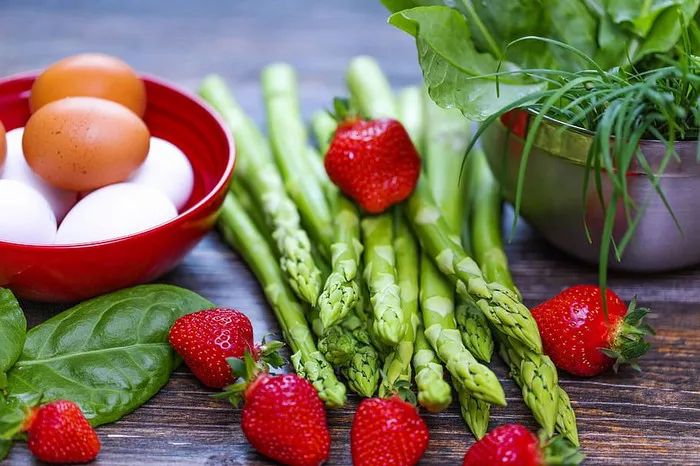Ningbo is a coastal city in the Zhejiang province of China, known for its rich history, vibrant culture, and thriving economy. The city is not only a major port and commercial hub, but it also boasts a variety of attractions that make it unique. In this article, we will explore what makes Ningbo famous, from its historical significance to its delicious food, cultural landmarks, and modern achievements.
A Historical Overview
Ningbo has a history that stretches back over 7,000 years. It is one of the oldest cities in China, and its location along the coast made it a crucial part of China’s maritime trade. During the Tang Dynasty (618-907 AD), Ningbo became an important port city. It was known as a center of commerce and culture, connecting China to the rest of the world via the sea.
One of the key aspects of Ningbo’s history is its role in the maritime Silk Road. The city became a hub for international trade, with goods being exchanged between China and regions like Southeast Asia, India, and even the Middle East. This historical significance has contributed to Ningbo’s vibrant and diverse cultural identity.
Today, Ningbo’s historical roots can be seen in its ancient buildings, temples, and cultural sites. The city’s long history has shaped its character, making it a fascinating place for history lovers and tourists alike.
Ningbo’s Famous Food
One of the highlights of visiting Ningbo is its food. Ningbo cuisine is a part of Zhejiang cuisine, known for its emphasis on fresh ingredients, seafood, and light flavors. The city’s coastal location means that fish and seafood are abundant in local dishes. The cuisine is also characterized by its use of soy sauce, vinegar, and sugar, creating a balanced and flavorful profile.
Ningbo Tangyuan (Sweet Rice Dumplings)
One of the most iconic dishes of Ningbo is tangyuan, a type of sweet rice dumpling. These dumplings are made from glutinous rice flour and are typically filled with sweet fillings like sesame paste or red bean paste. They are often served in a sweet broth and are especially popular during the Lantern Festival. The soft, chewy texture of the dumplings combined with the sweetness of the filling makes it a favorite dessert among locals and visitors.
Ningbo Seafood
Being a coastal city, seafood is abundant in Ningbo’s cuisine. One of the city’s most famous seafood dishes is steamed crab. Ningbo is known for its sweet and tender crabs, which are often steamed with ginger and garlic to enhance their natural flavor. Another seafood specialty is Ningbo-style shrimp, often stir-fried or steamed with minimal seasoning to let the natural sweetness of the shrimp shine through.
In addition to crabs and shrimp, Ningbo is also famous for its sea snails and fish dishes. The fish is often steamed or braised in a savory sauce made with soy sauce, ginger, and garlic.
Ningbo Hotpot
Like many parts of China, Ningbo has its own style of hotpot. Ningbo hotpot features a variety of ingredients, including fresh meats, vegetables, and seafood, all cooked in a flavorful broth. The broth is typically made with herbs, spices, and fish stock, creating a rich and aromatic base for the hotpot. The ingredients are dipped into the broth and cooked right at the table, allowing diners to enjoy fresh, hot food in a social setting. Ningbo hotpot is often enjoyed during colder months or festive gatherings.
Ningbo Moon Cake
Another famous food item from Ningbo is the Ningbo moon cake. Moon cakes are traditionally eaten during the Mid-Autumn Festival, a celebration of the harvest and the full moon. Ningbo moon cakes are unique for their sweet fillings, which often include red bean paste, lotus seed paste, or salted egg yolks. The pastry shell is typically golden brown and slightly crispy, and the cakes are often shaped in traditional patterns, making them both a delicious and visually appealing treat.
Cultural Landmarks and Attractions
In addition to its food, Ningbo is famous for its cultural landmarks. The city’s rich history has left behind many sites that are of great significance, both historically and culturally.
Tianyi Pavilion
One of the most famous landmarks in Ningbo is Tianyi Pavilion, which is the oldest private library in China. Built in the late Ming Dynasty (1368-1644), the pavilion houses a vast collection of ancient books, manuscripts, and cultural relics. The library is an important cultural heritage site in China, attracting scholars, historians, and visitors interested in Chinese literature and history.
The Tianyi Pavilion is surrounded by a beautiful garden, with lush greenery and traditional Chinese architectural elements. The combination of history, culture, and nature makes it a popular spot for tourists.
Ningbo Old Bund
The Old Bund is another famous spot in Ningbo. This area is located along the waterfront and is known for its historical architecture. During the late 19th and early 20th centuries, the Old Bund was a bustling commercial center, with many Western-style buildings constructed during the time when Ningbo was an important trading port. Today, the area has been preserved and is a popular destination for tourists to stroll along the river, enjoy the colonial-era buildings, and explore the many restaurants and cafes.
Baoguo Temple
For those interested in religious and cultural heritage, Baoguo Temple is a must-see. Located on the outskirts of Ningbo, Baoguo Temple is the largest Buddhist temple in the region. The temple dates back to the Eastern Jin Dynasty (317-420 AD) and features impressive architecture, including ancient wooden structures and intricate carvings. Visitors to the temple can enjoy its peaceful atmosphere and learn about Buddhist teachings and practices.
Ningbo Museum
The Ningbo Museum is a modern architectural marvel that is famous for its design as well as its collection. The museum is home to a variety of exhibits related to Ningbo’s history, culture, and art. The building itself is an example of contemporary architecture, with its unique “earth and clay” design inspired by Ningbo’s history as a port city. Inside, visitors can explore exhibits ranging from ancient relics to contemporary art, providing a well-rounded view of Ningbo’s cultural evolution.
Ningbo’s Economy and Modern Development
In addition to its rich history and culture, Ningbo is also known for its economic growth and development. The city has become one of China’s leading economic centers, particularly in terms of manufacturing and trade. Ningbo’s port is one of the busiest in the world, and the city is a major hub for shipping, logistics, and trade.
Ningbo is home to many factories and industries that produce everything from textiles to electronics, making it an important player in China’s industrial sector. The city’s modern skyline is a reflection of its economic prosperity, with numerous high-rise buildings and business districts.
Despite its modern development, Ningbo has managed to maintain its historical charm and traditional culture, offering a unique blend of old and new.
Festivals and Traditions
Ningbo is also famous for its festivals and traditional celebrations. One of the most well-known is the Ningbo International Fashion Festival, which attracts designers, models, and fashion enthusiasts from around the world. The festival showcases Ningbo’s importance as a manufacturing hub for textiles and fashion.
The Lantern Festival and Mid-Autumn Festival are also widely celebrated in Ningbo. During these times, the city comes alive with lantern displays, moon cake making, and traditional performances. These festivals offer visitors a chance to experience the vibrant culture of the city in a festive and lively atmosphere.
Conclusion
Ningbo is a city that offers a unique mix of history, culture, food, and modernity. Its rich historical significance as a trading port, combined with its thriving economy, makes it an important city in China. From its delicious cuisine, including seafood and famous dishes like tangyuan, to its cultural landmarks like Tianyi Pavilion and Baoguo Temple, Ningbo has much to offer both tourists and locals. As the city continues to grow and evolve, it remains a fascinating destination for anyone interested in Chinese history, culture, and modern development. Whether you’re exploring its ancient sites or tasting its delicious food, Ningbo is a place that will leave a lasting impression.
Related topics:
- Can Diabetics Eat Ice Cream? A Comprehensive Guide
- Can You Freeze Cream Cheese?
- Is Brown Rice Good for Diabetics?























